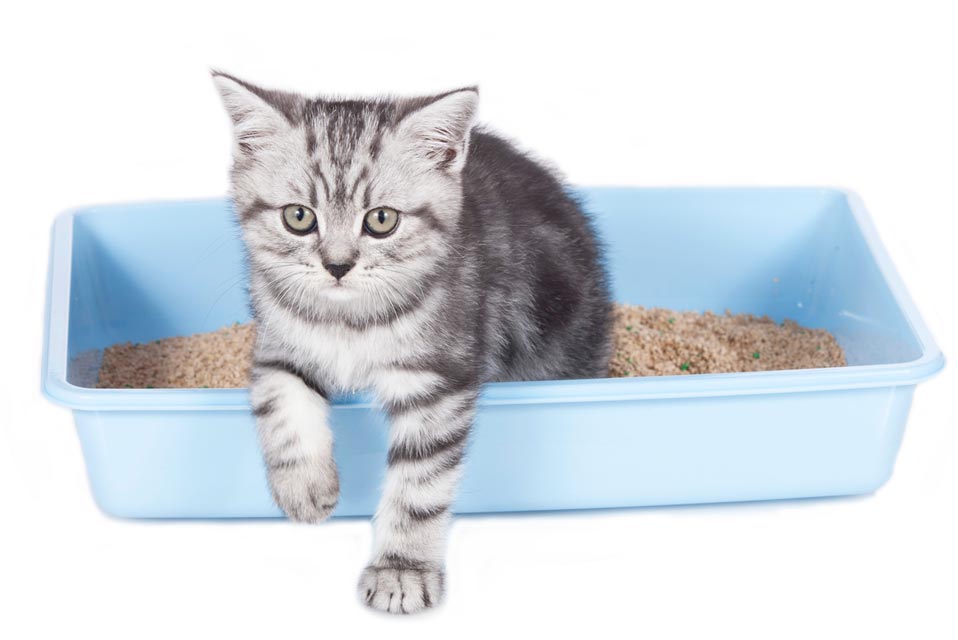- Home
- How to Clean a Litter Box

How to Clean a Litter Box

Cleaning the cat litter box is probably no one's favorite task, but it is something that needs to be done routinely and well in order to keep your cat happy and healthy. In fact, a litter box that isn't kept clean enough is quite likely to cause your cat to begin eliminating outside of it, which can be a huge problem. Here, we provide you with some tips, tricks, and hacks for keeping the litter box sparkling clean and your cat happy and purring.
Set up a Routine
One of the best things you can do when dealing with a cat litter box is to set up a routine for yourself for cleaning it. Getting into a routine will help ensure that you won't forget to deal with the litter box because it will be ingrained in your daily movements to care for it. Here are the tasks that you will need to fit into your daily, weekly, and monthly routines with regards to the litter box:
- At least twice daily scooping.
- Routine removal of all of the litter so you can scrub the box with soap and hot water.
- Replace the litter box itself every six months to one year.
The timing on these tasks may vary depending on how many cats you have, how many boxes there are in your home, and how dirty they get. For instance, in some homes, you might have to scoop three times per day, while in others once works just fine.
Tips, Tricks, and Hacks for Litter Box Cleaning
Here are a few things to keep in mind while dealing with your home's litter boxes:
- Use of a litter mat underneath the litter box, which will decrease the amount of litter and other litter box contents that are spread throughout your home.
- Don't use ammonia products to clean your cat litter box because they have similar components as urine, and your cat might find their strong odors objectionable. Also, many cats have an aversion to citrus scents, so you should avoid cleaners containing them.
- Keep a garbage pail with a cover on it near the litter box so that you can scoop directly into it. This will save you time and help you stick to your routine.
- Get a good litter scooper that is durable, scrapes the sides and bottom of the litter pan well, and doesn't hurt your wrist. We recommend this one: DuraScoop.
- Add a little bit of new litter every time you scoop, and spread it around to keep the litter at a depth that your cat will like, typically around 2 to 3 inches for an adult cat and 1/2 to 1 inch for a kitten.
- Clumping litter works best for this method of cleaning, and if you use non-clumping litter, you will need to remove all of that and replace it more often.
- A large, shallow litter box like a sweater box usually works great for cats to get in and out of and decreases the amount of litter that gets flung out, but you may need to use more than one litter mat to contain litter that tries to escape. Sometimes a box with higher sides is necessary if your cat is a big digger. In that case, a covered litter box without the cover (cats often dislike covered boxes) can work well because the sides are high but the entry point is cut low.
- While scooping the litter box, tipping it a little bit to the side helps reveal clumps that are trapped in the corners, and then you can tap or scrape them out. Repeating this from several angles helps you be sure you've gotten everything out.
Warning! Pregnant women should avoid cleaning litter boxes due to the danger of toxoplasmosis infection. If a pregnant woman must clean the litter box, she should always wear disposable gloves and wash her hands thoroughly afterward. Cleaning the box daily can also help because it takes the spores a day or two to become infective once they're passed in the cat's stool. Toxoplasmosis can also be spread to a pregnant woman when she consumes undercooked meat or works in a garden that outdoor cats have treated like a litter box, so gloves should be worn then, as well.
Remember, if your cat begins urinating or defecating outside of the litter box, visit the veterinarian right away to ensure the cause is not medical.

 Loading... Please wait...
Loading... Please wait...




